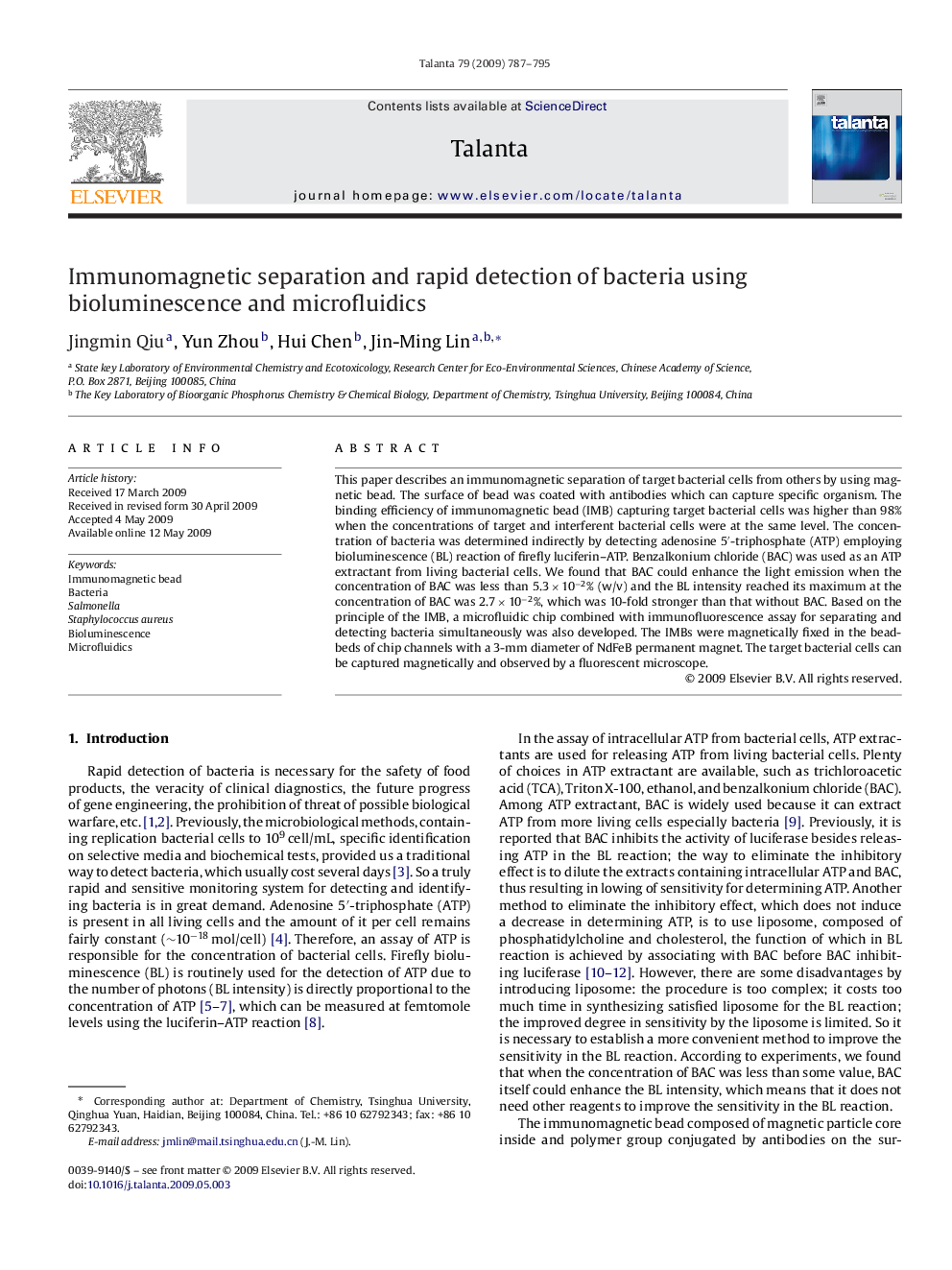| Article ID | Journal | Published Year | Pages | File Type |
|---|---|---|---|---|
| 10559634 | Talanta | 2009 | 9 Pages |
Abstract
This paper describes an immunomagnetic separation of target bacterial cells from others by using magnetic bead. The surface of bead was coated with antibodies which can capture specific organism. The binding efficiency of immunomagnetic bead (IMB) capturing target bacterial cells was higher than 98% when the concentrations of target and interferent bacterial cells were at the same level. The concentration of bacteria was determined indirectly by detecting adenosine 5â²-triphosphate (ATP) employing bioluminescence (BL) reaction of firefly luciferin-ATP. Benzalkonium chloride (BAC) was used as an ATP extractant from living bacterial cells. We found that BAC could enhance the light emission when the concentration of BAC was less than 5.3Â ÃÂ 10â2% (w/v) and the BL intensity reached its maximum at the concentration of BAC was 2.7Â ÃÂ 10â2%, which was 10-fold stronger than that without BAC. Based on the principle of the IMB, a microfluidic chip combined with immunofluorescence assay for separating and detecting bacteria simultaneously was also developed. The IMBs were magnetically fixed in the bead-beds of chip channels with a 3-mm diameter of NdFeB permanent magnet. The target bacterial cells can be captured magnetically and observed by a fluorescent microscope.
Related Topics
Physical Sciences and Engineering
Chemistry
Analytical Chemistry
Authors
Jingmin Qiu, Yun Zhou, Hui Chen, Jin-Ming Lin,
